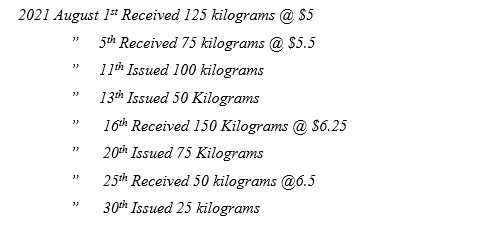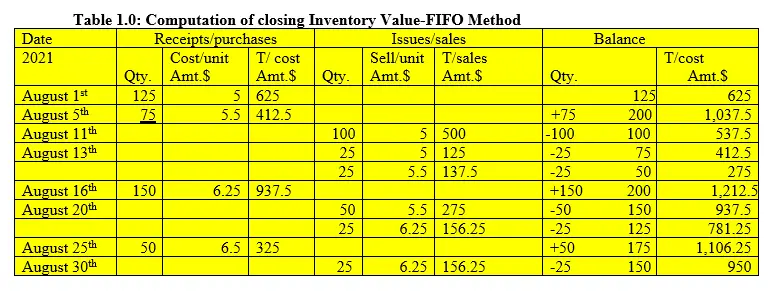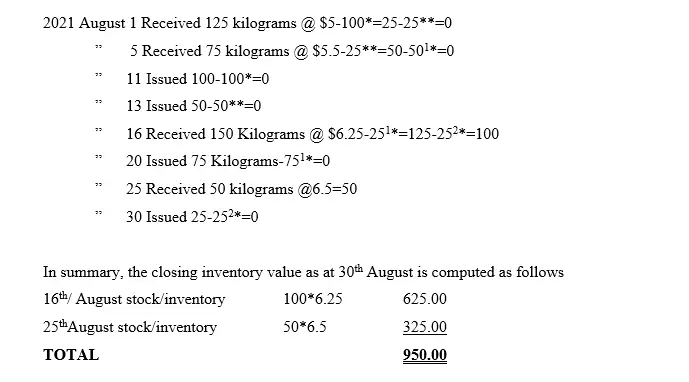Material Inventory Valuation Procedure -First In First Out (FIFO) Inventory Valuation Method
Specific objective; definition; fifo method of inventory valuation; example
Specific Objectives
This article is guided by the following 2 specific objectives. The learner/user of this article will be able to;
- Define the term FIFO inventory valuation method
- Compute inventory monetary value using FIFO method
First In First Out (FIFO) Inventory Valuation Method
Definition
FIFO method is an inventory valuation approach which considers valuation of closing inventory at the end of the financial period with the assumption that the inventory elements which are forming the closing inventory are from the recently purchased goods. As the name suggests, the method assumes that first raw materials received in the business or factory are the first ones to be consumed in manufacturing or production. Therefore, by the time stock taking activity is being undertaken, the materials available are the ones which were received recently.
Example
Polite Notice (PN) company ltd provided you with the following inventory details for the month of August 2021

Required
Using the above information, determine the monetary value of closing inventory at the end of August under FIFO method.
Solution

Explanation on Inventory Issuance-FIFO Method above
Note: That, total units of inventory before issuance began was 200 units made up of 1stAugust 125 units plus 5th August 75 units. Then…
11th August the first 100 units of inventory was issued and was from the 1st August 125 batch of units of inventory received. The balance after that issuance was 25 units of inventory. On 13th August the next issuance of 50 units of inventory was made and was from two batches; first, 25 units were gotten from the 1stAugust batch of inventory whose balance was 25 units and second, the remaining 25 units was picked from the 5th August batch. On 16th August, received additional 150 units of inventory. So, the current total units of inventory are 50+150=200. On 20th August, another issuance of 75 units of inventory was made. For this case, 50 units were picked from the 5th August batch of inventory which had a balance of 50 units. This batch got exhausted. Therefore, the remaining 25 units to be issued was gotten from the 16th August 150 batch of units where by the balance left is 125 units thereafter. Then another additional inventory was received on 25th August of 50 units translating to a total of175 units of inventory. Then the last issuance was inventory of 25 units and it was picked from the 16th August inventory which resulted to a final balance of 100 units. So, after the last issuance, there was a total of 150 units as balance brought down (made up of 100 units of 16th August batch plus 50 units of 25thAugust batch).
Note that the superscripts (i.e., *, ** ,1* and 2*) used below will guide you on which inventory batch each issuance was picked from. This inventory analysis is a computational proof of monetary value of closing inventory as at 30th/08/2021.
